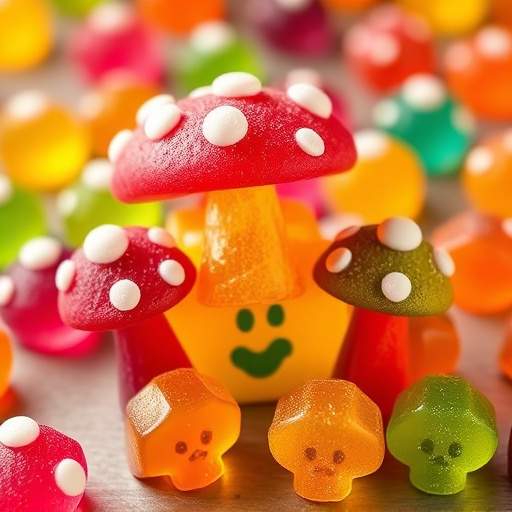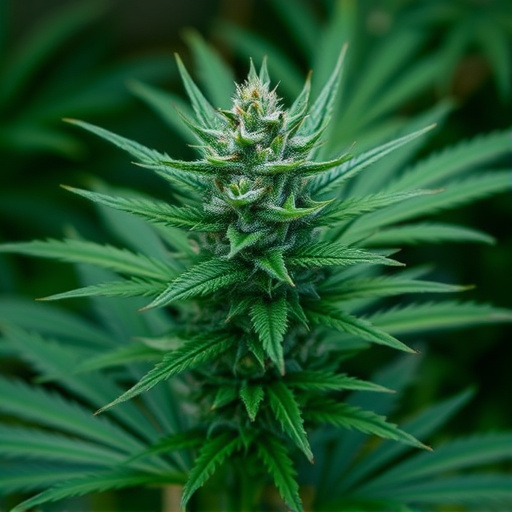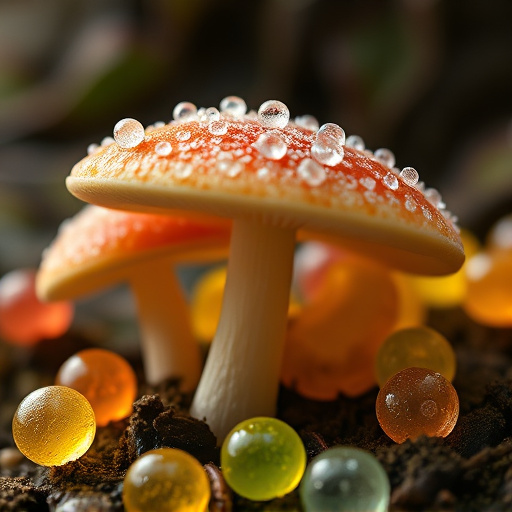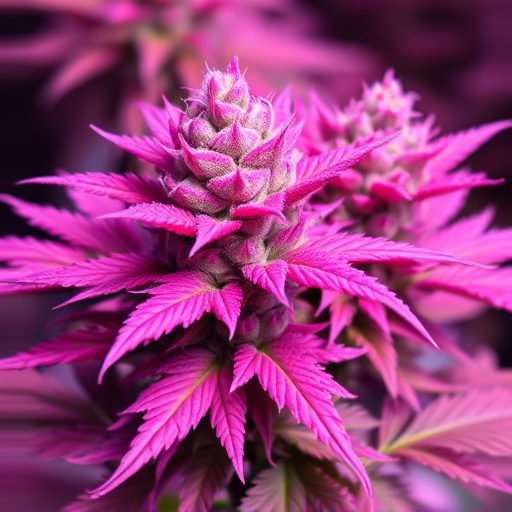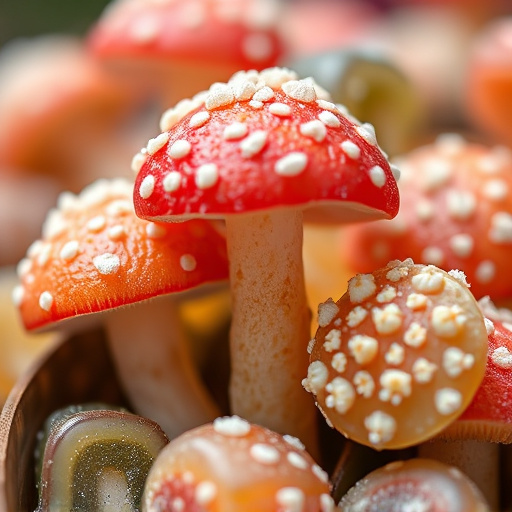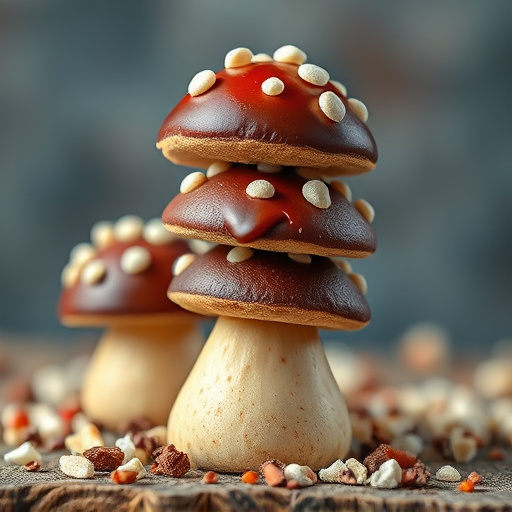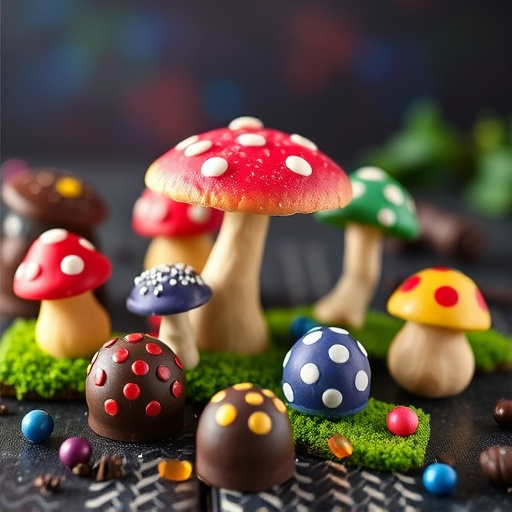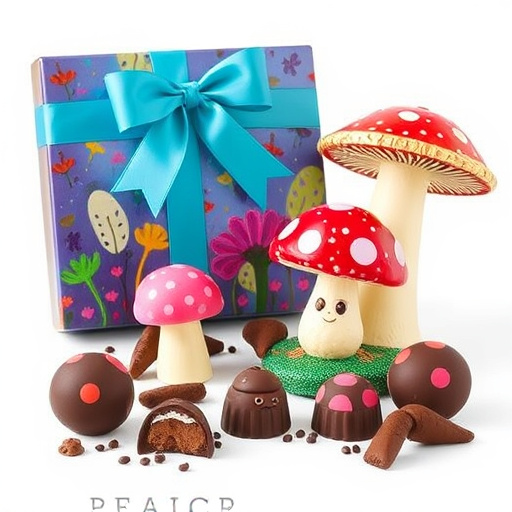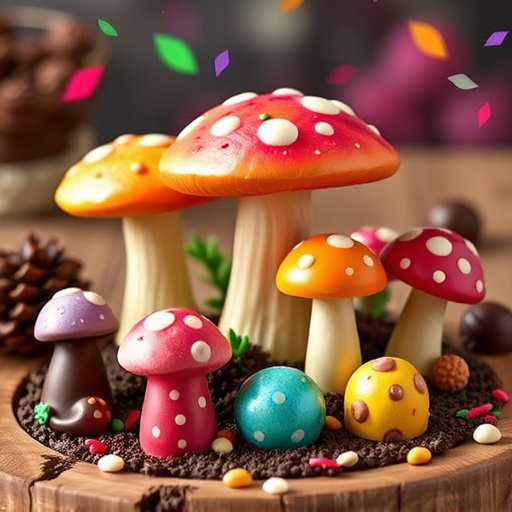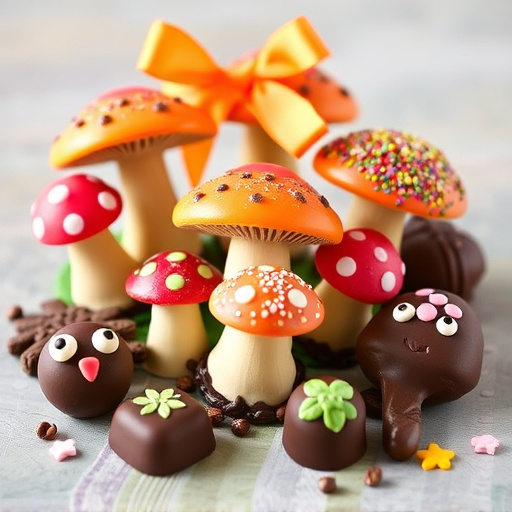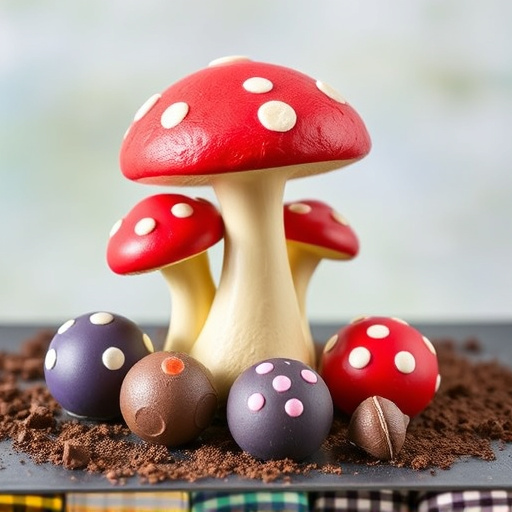“Unveiling the Power of Magic Mushroom Chocolates: A Deep Dive into Neural Connectivity and Beyond. This article explores the science behind these unique treats, delving into the active compounds psilocybin and psilocin, and their mind-bending effects on brain function. We uncover how magic mushroom chocolates enhance neural connectivity, offering potential therapeutic benefits for mental health conditions. Additionally, we navigate the side effects, safety considerations, and legal aspects of this emerging trend, providing a comprehensive guide to understanding the world of magic mushroom chocolates and their impact on neural connectivity.”
- The Science Behind Magic Mushroom Chocolates and Their Effects on the Brain
- – Exploring the active compounds in magic mushrooms (psilocybin and psilocin)
- – How these compounds interact with the brain's neural receptors and neurotransmitters
The Science Behind Magic Mushroom Chocolates and Their Effects on the Brain
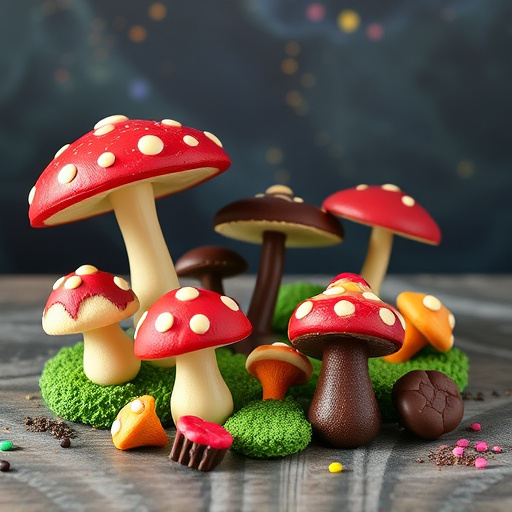
The science behind magic mushroom chocolates reveals an intriguing interplay between psilocybin, the active compound found in certain mushrooms, and our neural connectivity. When consumed, psilocybin is converted into psilocin, a substance that interacts with serotonin receptors in the brain, particularly those involved in cognitive functions, mood regulation, and conscious perception. This interaction can lead to altered states of consciousness, often characterized by heightened creativity, increased emotional awareness, and enhanced sensory experiences.
Research suggests that magic mushroom chocolates may have therapeutic potential by promoting neural plasticity—the brain’s ability to form new connections and adapt. This could be beneficial for mental health conditions like depression and anxiety. The experience induced by magic mushroom chocolates is not merely a temporary alteration but might offer insights into the brain’s functioning, potentially opening doors to novel perspectives and personal growth.
– Exploring the active compounds in magic mushrooms (psilocybin and psilocin)
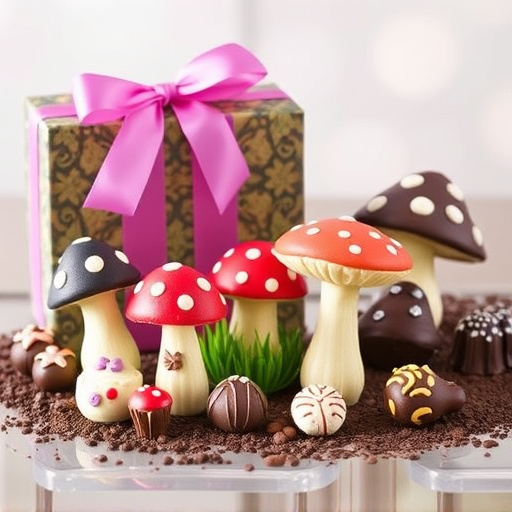
The magic mushroom chocolates experience is rooted in the active compounds found within Psilocybe mushrooms, primarily psilocybin and psilocin. These compounds are known for their unique interaction with our brain’s neural connectivity. Psilocybin acts as a serotonin receptor agonist, particularly targeting the 5-HT2A receptors, which play a crucial role in mood regulation, perception, and consciousness. When activated, this interaction can lead to altered states of consciousness, enhanced creativity, and profound insights.
Psilocin, on the other hand, is a metabolite produced when psilocybin breaks down in the body. It acts as a partial agonist at serotonin receptors, modulating the same neural pathways as psilocybin but with slightly different effects. Together, these compounds create an experience that has been described as mystical and transformative, often leading to discussions about spiritual insights, emotional processing, and even potential therapeutic applications for mental health conditions.
– How these compounds interact with the brain's neural receptors and neurotransmitters
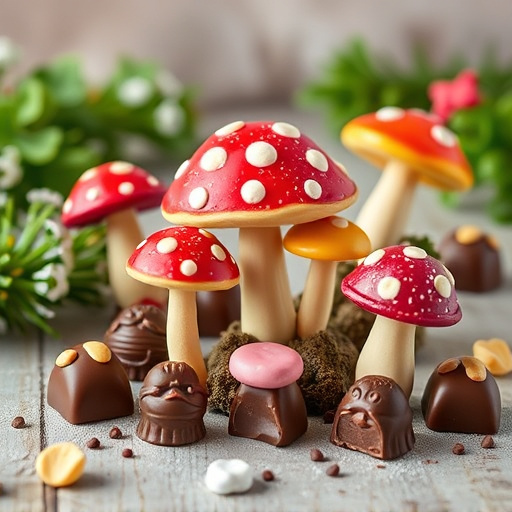
Magic mushroom chocolates, created by infusing psilocybin, a key compound found in psychedelic mushrooms, into delicious chocolate treats, offer more than just a sensory experience. When consumed, psilocybin interacts with the brain’s complex neural connectivity. It binds to serotonin receptors, particularly those that use serotonin as a neurotransmitter, leading to a cascade of effects. Serotonin plays a crucial role in mood regulation, cognitive function, and perception. By modulating its activity, psilocybin can enhance these processes, potentially offering therapeutic benefits for conditions like depression and anxiety.
These compounds also influence other neurotransmitters, such as dopamine, known for its involvement in pleasure and reward pathways. This interaction can result in altered states of consciousness, heightened creativity, and profound insights. The effects are not merely psychological; they stem from the direct engagement of these compounds with the brain’s intricate neural network, creating a unique and profound experience that extends beyond typical sensory pleasures.
Magic mushroom chocolates, while an intriguing concept, offer more than just a fleeting high. The active compounds psilocybin and psilocin not only induce altered states of consciousness but also interact with the brain’s neural connectivity. Scientific research suggests these compounds can stimulate creative thinking, enhance emotional well-being, and potentially provide therapeutic benefits for mental health conditions. However, it’s crucial to approach their consumption responsibly, as individual responses vary. Further studies are needed to fully understand the long-term effects of magic mushroom chocolates on neural connectivity and overall brain function.
